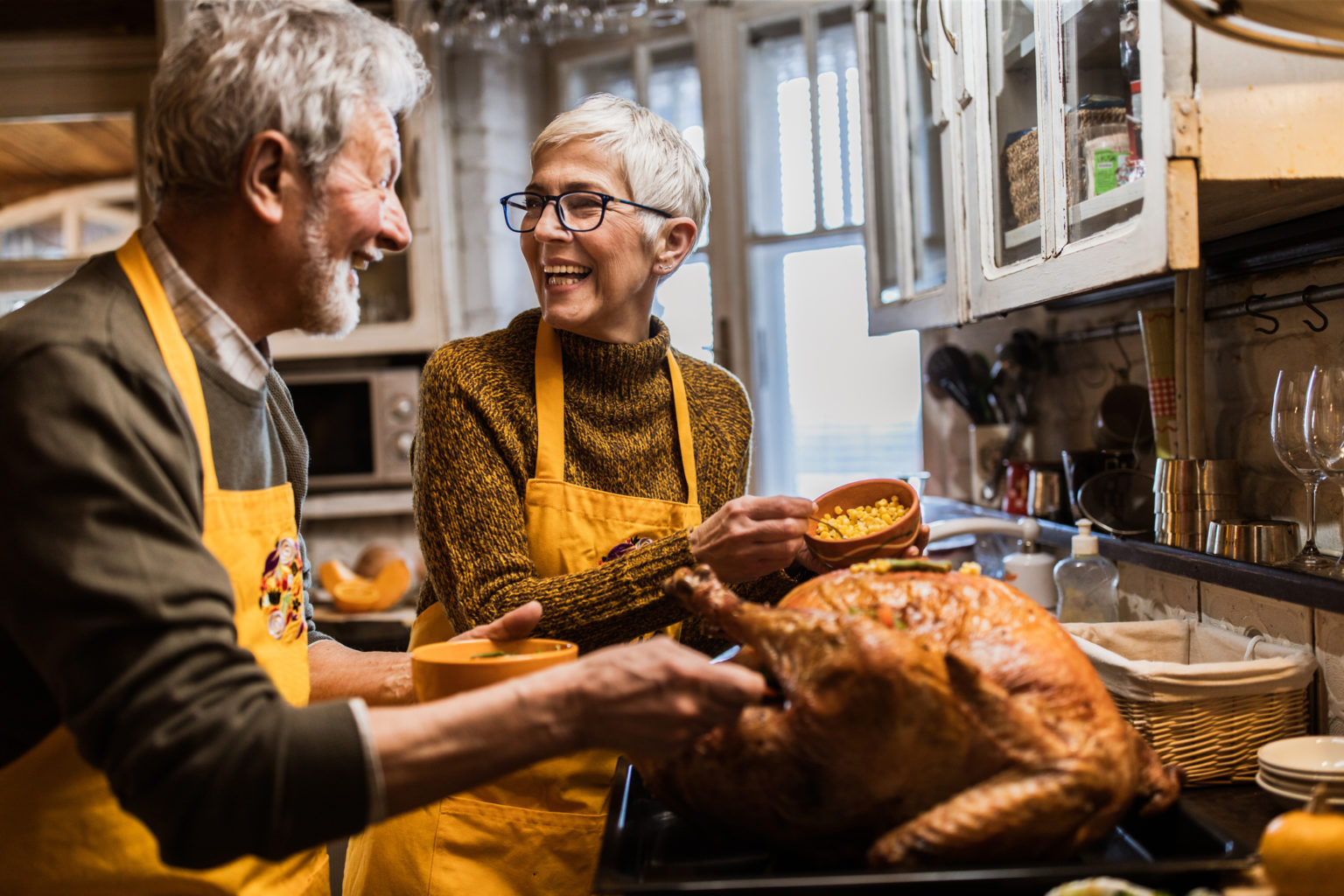Last-Minute Tips for a Healthy Thanksgiving Turkey

Thanksgiving, the first of the winter holidays, is a time to enjoy fellowship with family and friends, thinking about the things for which we are grateful. And as we sit down around the table, we will usually hear expressions of gratitude for a delicious turkey dinner with all the side dishes our families love—the traditional recipes, and maybe a few new ones.
But with all the excitement of our reunions with loved ones, we might be distracted from a particularly important part of creating a Thanksgiving feast: safe preparation of the holiday bird.
Food safety experts tell us that many outbreaks of foodborne illness happen at Thanksgiving. “Food poisoning,” as it’s sometimes called, can be especially dangerous for older adults, who are at greater risk because of a decreased immune system and changes to the digestive system.
The experts warn that people who are unfamiliar with poultry roasting—and even experienced cooks—may thaw, prepare, roast and store leftovers in an unsafe manner. We’re often cooking a lot of food, the meal can stretch over several hours from appetizers to dessert, and we might be tempted to settle in to watch a football game before we head back to the kitchen to refrigerate those leftovers. But it’s important to remember that bacteria flourish when the turkey is in a temperature danger zone: warmer than 40° and cooler than 140°.
Here’s some information from the U.S. Department of Agriculture (USDA) and the Centers for Disease Control and Prevention (CDC) for food safety at every step of the Thanksgiving meal:
- Thawing. If you’ve purchased a frozen turkey, never set it out to thaw on the countertop. Thaw it in the refrigerator, in cold water, or in the microwave. Be sure the turkey is completely thawed before roasting. The USDA says that it will take 24 hours for every five pounds of turkey to thaw in the refrigerator.
- Preparation. Clean your work area, utensils, and your hands thoroughly before preparing the turkey. Wash hands, work surface and utensils again before touching other foods. The USDA does not recommend washing the turkey—they report that washing raw poultry can cause bacteria to spread up to three feet! Proper roasting will kill any bacteria that is present.
- Stuffing. Food safety experts prefer that we cook the stuffing separately in a casserole dish. However, knowing that most of us love a stuffed bird, they emphasize that we should stuff the turkey at the last minute and check it with a food thermometer to see that it is at least 165°. Then let the turkey sit for about 20 minutes before removing the stuffing, which allows it to cook a little more.
- Roasting. Set the oven for no lower than 325°. Test for doneness with a food thermometer. For a whole turkey, check the internal temperature of the thigh, wing, thickest part of the breast and the center of the stuffing. The temperature should be at least 165°. Other tests for doneness, such as pressing the meat or checking the juices, are not accurate.
- Storing leftovers. Refrigerate leftovers as soon as possible—within two hours or less. Cut the turkey off the bone and remove the stuffing before refrigerating. Consume leftovers within four days, or freeze. If using a cooler, be sure it has plenty of ice.
Taking these precautions will help ensure that foodborne illness doesn’t make an unwelcome guest appearance at your holiday celebration!
![Health Concepts [logo]](https://healthconceptsltd.com/wp-content/themes/healthconcepts-corporate/images/logo.png)
